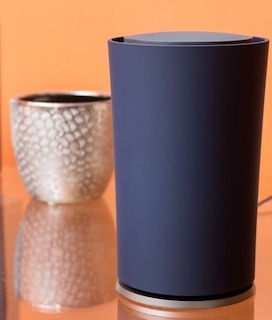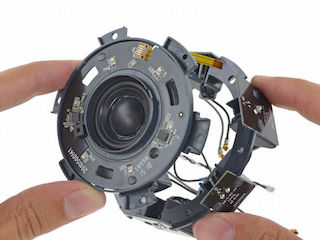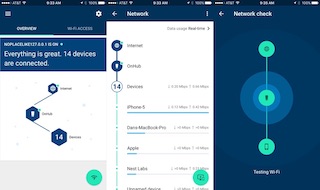Oct 26th, 2015 - Category: Strategy
A company’s portfolio of high tech products and services is valuable and interconnected. Therefore, if one (or more) are not meeting customers’ expectations, it is critical to fix them or discontinue them as soon as possible. Inconsistent pricing or policies are another area to review. For example, some companies charge high prices for standard cables, add large mark-ups to computers sold with systems, or charge inappropriate restocking fees. Salespeople are trained to provide appropriate excuses such as ”We’re not in the computer (or cable) business” or “the computer costs more because we test it for compatibility with our systems.” Great, but that’s the company’s problem, not the customer’s. I used to regularly tell customers to buy certain common cables or computers online. It was the right thing to do and besides, customers aren’t stupid. When they discover these outrageous costs for themselves, it often leads them to start questioning every line item in a complex system, jeopardizing the entire sale. Even worse, those products and policies can make customers have doubts about an entire product line or company.
 Even large companies with hundreds of products can make mistakes. For example, Google obviously has some amazing products and services: Google Search, Maps, Gmail, Apps for Business, Drive, Photos, Adwords, Fiber, Nexus phones / tablets, Android OS, etc. so when they released a WiFi router, it caught my attention. In general, my expectations are low, I just want reliable WiFi in most of the house which means my office, my wife’s office, the living room, etc. The rest of the house including the backyard is bonus. After using the Netgear Nighthawk AC1900 Dual Band Wi-Fi Gigabit Router for the past year, it was time for a change. It covered the back of the house and upstairs well, but coverage was spotty in the front and the speed was wildly inconsistent. Since a hardwired range extender seemed to conflict with the Netgear’s wireless signal, I started researching Google’s new OnHub home router.
Even large companies with hundreds of products can make mistakes. For example, Google obviously has some amazing products and services: Google Search, Maps, Gmail, Apps for Business, Drive, Photos, Adwords, Fiber, Nexus phones / tablets, Android OS, etc. so when they released a WiFi router, it caught my attention. In general, my expectations are low, I just want reliable WiFi in most of the house which means my office, my wife’s office, the living room, etc. The rest of the house including the backyard is bonus. After using the Netgear Nighthawk AC1900 Dual Band Wi-Fi Gigabit Router for the past year, it was time for a change. It covered the back of the house and upstairs well, but coverage was spotty in the front and the speed was wildly inconsistent. Since a hardwired range extender seemed to conflict with the Netgear’s wireless signal, I started researching Google’s new OnHub home router.
 At first glance, it is a great idea. It got a positive review from The Verge and it looks so good that it could go in the middle of the house instead of in the networking closet. The central location would improve coverage. In Google’s marketing materials they promise speedy WiFi that ”speaks human” through a simple app for setup, troubleshooting, and monitoring. Then I read ArsTechnica’s (Google’s smart home Trojan horse is a $200 leap of faith) and Gizmodo’s (Google’s OnHub Is a Mysterious and Slightly Terrible Device). These reviews gave me second thoughts. Did I really want a device designed to be setup through its massive (3 watt) audio speaker that is used only for the initial setup? Was a glowing cylinder in the middle of the house with a network and power wire running into it really going to look good? Technically speaking, what’s with all the mysterious antennas in the unit (a total of 13!)? Darn it, we just want fast, reliable WiFi in most of the house. We’re not searching for extraterrestrial life.
At first glance, it is a great idea. It got a positive review from The Verge and it looks so good that it could go in the middle of the house instead of in the networking closet. The central location would improve coverage. In Google’s marketing materials they promise speedy WiFi that ”speaks human” through a simple app for setup, troubleshooting, and monitoring. Then I read ArsTechnica’s (Google’s smart home Trojan horse is a $200 leap of faith) and Gizmodo’s (Google’s OnHub Is a Mysterious and Slightly Terrible Device). These reviews gave me second thoughts. Did I really want a device designed to be setup through its massive (3 watt) audio speaker that is used only for the initial setup? Was a glowing cylinder in the middle of the house with a network and power wire running into it really going to look good? Technically speaking, what’s with all the mysterious antennas in the unit (a total of 13!)? Darn it, we just want fast, reliable WiFi in most of the house. We’re not searching for extraterrestrial life.
 So I ended up buying an Apple Airport Extreme. The range isn’t as good as the Netgear, but it plays well with the hardwired extender. The best part is that it is fast and stable even at the edges of coverage. Interestingly, ArsTechnica recently published a review of professional WiFi equipment from Ubiquiti which made me realize how common WiFi problems are: “UniFi made me realize how terrible consumer Wi-Fi gear is.” Now this is a beautiful WiFi access point.
So I ended up buying an Apple Airport Extreme. The range isn’t as good as the Netgear, but it plays well with the hardwired extender. The best part is that it is fast and stable even at the edges of coverage. Interestingly, ArsTechnica recently published a review of professional WiFi equipment from Ubiquiti which made me realize how common WiFi problems are: “UniFi made me realize how terrible consumer Wi-Fi gear is.” Now this is a beautiful WiFi access point.
The bottom line is that casual users who want an easy, “beautiful” WiFi router probably won’t spent $200 for OnHub and users who would spent $200 will not find OnHub powerful enough due to a lack of ports and a simplistic setup app. This got me thinking about Google in a different way. How could they release such a “weird” product? Who made and approved these design decisions?  Is Google Apps for Business or Voice going to get strange redesigns next? Google made some poor decisions in their new Inbox for Gmail product and Project Fi is making me nervous. On the positive side, maybe Google’s vision will become clear in the near future when OnHub is able to control Google’s smart home products like Nest thermostats (great!), cameras (great!), smoke detectors (?), lights (?), etc. as well as WiFi all from one app? Hopefully Google will either fix, discontinue, or at least explain OnHub which would be better than Google becoming known for questionable products and services. In the meantime, if anybody has an OnHub, let me know your experience. Maybe, as Google says in the On App, “everything is great!”
Is Google Apps for Business or Voice going to get strange redesigns next? Google made some poor decisions in their new Inbox for Gmail product and Project Fi is making me nervous. On the positive side, maybe Google’s vision will become clear in the near future when OnHub is able to control Google’s smart home products like Nest thermostats (great!), cameras (great!), smoke detectors (?), lights (?), etc. as well as WiFi all from one app? Hopefully Google will either fix, discontinue, or at least explain OnHub which would be better than Google becoming known for questionable products and services. In the meantime, if anybody has an OnHub, let me know your experience. Maybe, as Google says in the On App, “everything is great!”